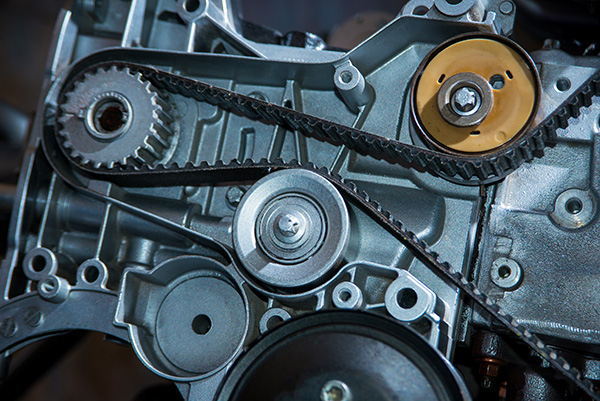
Certain components often take center stage in automotive maintenance, and the timing belt is undoubtedly one of them. But what exactly is a timing belt, and why is it so crucial for the smooth operation of your vehicle's engine?
What is a Timing Belt?
A timing belt, also known as a cambelt or timing chain, is a crucial component of an internal combustion engine. Its primary function is to synchronize the rotation of the engine's crankshaft and camshaft(s), ensuring that the valves open and close at precisely the right times during the engine's operation. This synchronization is vital for the engine's proper functioning, as it allows for the precise intake of air and fuel and the expulsion of exhaust gasses.
How Does a Timing Belt Work?
To understand how a timing belt works, let's break it down into its basic components. The timing belt is a toothed rubber belt that wraps around the crankshaft and camshaft pulleys. As the crankshaft rotates, it turns the timing belt, which, in turn, rotates the camshaft(s). This rotation ensures that the valves open and close in perfect harmony with the movement of the pistons, allowing for efficient combustion and optimal engine performance.
When to Replace Your Timing Belt
Now that we have a basic understanding of what a timing belt is and how it works, the next question is, when should you replace it? Timing belt replacement intervals vary depending on the make and model of your vehicle, as well as the type of engine it has.
As a general rule of thumb, most manufacturers recommend replacing the timing belt every 60,000 to 100,000 miles, or every 5 to 7 years, whichever comes first.
Signs Your Timing Belt Needs Replacement
While following the manufacturer's recommended replacement intervals is necessary, it's also crucial to be aware of the warning signs that indicate your timing belt may be nearing the end of its lifespan. Some common signs of a failing timing belt include:
- Visible Wear and Tear: Inspect the timing belt for signs of cracking, fraying, or glazing. Any visible damage indicates that the belt is in poor condition and should be replaced.
- Engine Misfires: If your engine begins to misfire or run rough, it could be a sign that the timing belt is slipping or failing to maintain proper synchronization between the crankshaft and camshaft(s).
- Engine Overheating: A failing timing belt can also cause the engine to overheat due to the improper timing of the intake and exhaust valves, leading to decreased coolant flow and inefficient cooling.
Can I Change the Timing Belt Myself?
While it's technically possible to change the timing belt yourself, it's not recommended for inexperienced individuals. Replacing a timing belt requires specialized tools, mechanical knowledge, and precise timing to ensure proper installation.
Mistakes during the replacement process can lead to catastrophic engine damage and costly repairs. It's best to leave timing belt replacement to trained professionals who have the expertise and equipment to do the job correctly the first time.
What Happens If the Timing Belt Breaks?
If the timing belt breaks while the engine is running, it can have severe consequences. Since the timing belt is responsible for synchronizing the engine's internal components, a broken belt can cause the valves to collide with the pistons, resulting in bent valves, damaged pistons, and potentially catastrophic engine failure.
The engine may stall suddenly, and attempting to restart it can exacerbate the damage. In some cases, the engine may be irreparably damaged, requiring a costly rebuild or replacement. Regular timing belt inspections and timely replacements are crucial to prevent such catastrophic failures.
Don't risk engine damage due to a faulty timing belt. Let Precision Import Repair handle your timing belt maintenance needs with precision and expertise. Contact us now to book your appointment.